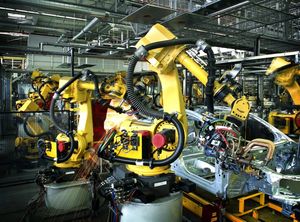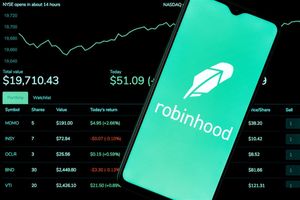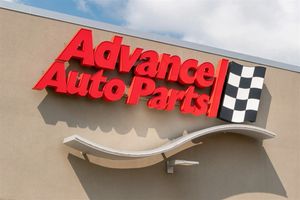The "Level 3 Autonomous Vehicle Market by Region (Asia Pacific, North America, Europe) - Global Forecast to 2035" report has been added to ResearchAndMarkets.com's offering.
The level 3 autonomous vehicles market is projected to grow from 291 thousand units in 2025 to 8.7 million units by 2035 at a CAGR of 40.5%
The report provides valuable insights for both market leaders and new entrants seeking to understand ongoing developments in the Level 3 autonomous vehicles market. It enables stakeholders to gain a clear view of current offerings and anticipated future plans of OEMs and Tier I companies, with separate analyses for both global and Chinese players. Additionally, the report helps stakeholders grasp the overall market pulse by presenting key market drivers, challenges, and technology trends. It also offers a detailed overview of the current and future penetration trends of Level 3 autonomous vehicles, supporting informed strategic decision-making.
Level 3 autonomy is an essential milestone in the overall roadmap for autonomous vehicles. While level 1 and 2 autonomous features have become prevalent in most countries worldwide, level 3 autonomy is picking up relatively slowly. Level 1 & 2 autonomy is primarily driven by the regulatory norms requiring advanced active and passive safety systems in the vehicles complemented by advancements in sensing hardware and software algorithms.
On the other hand, level 3 autonomy faces challenges from robust and reliable autonomous suites and the regulatory side, which is reluctant to deploy level 3 autonomous vehicles on public roads. The reason for this gap is the need for exceptional reliability from the vehicle systems (steering, braking, and vehicle electrical system) and uncertainty on the liability of any mishap, potentially scrapping the entire idea of autonomous and automated driving.
Consumer confidence across China and the Middle East to open opportunities for OEMs planning to launch level 3 autonomous vehicles
Chinese consumers are generally open about adopting advanced vehicle features, including driving technologies. Consumers in China have recently shown a rising interest in Level 2+ and Level 3 features. However, safety concerns are still a major challenge. Recent reports from Chinese automotive media state that while interest in level 3 features is strong - especially among younger, tech-savvy buyers - most mainstream consumers remain cautious. For example, in surveys of budget EV buyers (~100,000 RMB class), safety consistently ranked as the most considerable hesitation.
The most notable strategy of Chinese OEMs like BYD, Xpeng, and NIO is bundling advanced level 2+/level 3 autonomy as standard or low-cost features to stay competitive. This strategy reflects a market where consumers increasingly expect smart-driving features as a baseline - rather than paying a premium. Chinese consumers are open to level 3 tech, especially in higher-end EVs, but demand strong safety training, demos, and regulatory clarity.
Prioritizing scalable & modular E/E architecture development to emerge as the key to faster shift to autonomous vehicles
Recent years have witnessed rapid attention toward software-defined vehicles, which essentially are based on next-gen E/E architecture that forms the basis of a flexible and more powerful foundation for autonomous vehicles. Higher autonomy levels require seamless sensors, computing chips, and connectivity integration for better reliability. Thus, developing scalable and modular E/E architecture (such as zonal) becomes the first step for higher autonomy levels.
Level 2 autonomy can be deployed upon conventional architectures as they do not have primary requirements around OTA updates, scalability, and feature enhancement. With level 3 autonomous vehicles being the foundation of truly autonomous vehicles, investing in next-gen architecture is the most crucial step towards autonomous mobility and additional revenues. This can be achieved through partnerships with Tier I & tech companies or in-house development. While Tesla is more focused on in-house development of OS and E/E architecture, OEMs such as Volkswagen, Mercedes-Benz, and others are taking a hybrid approach with a major focus on in-house development and also through partnership with Tier I/tech companies.
Asia Pacific is projected to demonstrate the fastest growth in the level 3 autonomous vehicles market during the forecast period.
North America (California & Nevada) and Europe (particularly Germany) are leading the level 3 autonomous vehicles market as these are the only markets with level 3 driving deployment and approval. While Japan also allows using level 3 autonomous vehicles on public roads, it has limited use due to Honda's production of only 100 vehicles. Mercedes-Benz and BMW are leading the market by launching their level 3 autonomous models.
This is expected to be followed by OEMs such as Zeekr, Xpeng, BYD, Volkswagen, and Hyundai, with their aggressive efforts for level 3 autonomous vehicle development. This growth is expected to kickstart in the next 2-3 years as Chinese OEMs such as Zeekr, Xpeng, and others plan to launch level 3 autonomous vehicles. It should be noted that Chinese OEMs are focused on gaining mass volume in domestic and international markets. BYD primarily leads this trend by launching its God's Eye self-driving system. Thus, as the level 3 autonomous vehicle reaches the final development stage, rapid growth can be expected in the country for these vehicles.
Competitive Landscape
Mercedes-Benz, BMW, and Honda currently dominate the level 3 autonomous market. Other major players expected to lead the market are Volkswagen, Stellantis, and Hyundai. Chinese OEMs such as BYD, Xpeng, and Zeekr are aggressively working on level 3 autonomous vehicle development, focusing on mass market share gain.
Market Dynamics
Drivers
- Focus on Improving Sensing Technologies
- Positive Consumer Perception on Adas Systems
- Popularity of Subscription Packages
Challenges
- Lack of Clarity on Accident/Mishap Liability
- Liability Concerns for Major Stakeholders
- Issues Concerning Infrastructure Readiness
- Infrastructure Limitations in Major Countries
- Adas Norms and Regulations
- Government Regulations on Safety Mandates
- Regulatory Norms Mandating Adas Features
- Regulatory Skepticism in Select Markets
- Regulatory Norms for Adas in Select Countries
Technology Analysis
- Level 3 Autonomy Hardware
- Sensor Fusion Technology for Level 3 Autonomy
- Deep Learning-Based Sensor Fusion
- Artificial Intelligence for Sensor Fusion
- Role of 5G Connectivity in Level 3 Autonomy
- Ecosystem for Overall Adas and Autonomous Vehicles
- Insights into High-Performance Chips Powering Next-Gen Adas and Autonomy
- Computing Units for Adas Applications
- Insights into Advancements to Level 4 Autonomy in Mobility and Trucking
Consumer Perception on ADAS, by Region
- China
- US
- European Union
- India
- South Korea
- Japan
- Middle East
Recommendations
- Recommendations for Oems
- Prioritizing Scalable and Modular E/E Architectures
- Investing in Differentiated Sensor Fusion and Redundancy
- Developing Strategic Partnerships with Tier I/Chipset Manufacturers
- Focusing on Specific Use Cases and Regional Odds
- Offering Flexible Monetization Models
- Ensuring Co-Development with Regulatory Authorities
- Recommendations for Tier I Companies
- Focusing on Developing Level 3-Ready Sensor Suite
- Integrating Sensor Fusion with Computing Platform Package
- Focusing on Software-Defined Vehicle (Sdv) Needs of Oems
- Focusing on Region-Specific Offerings
For more information about this report visit https://www.researchandmarkets.com/r/7wo70r
About ResearchAndMarkets.com
ResearchAndMarkets.com is the world's leading source for international market research reports and market data. We provide you with the latest data on international and regional markets, key industries, the top companies, new products and the latest trends.
View source version on businesswire.com: https://www.businesswire.com/news/home/20250808660305/en/
Contacts
ResearchAndMarkets.com
Laura Wood, Senior Press Manager
press@researchandmarkets.com
For E.S.T Office Hours Call 1-917-300-0470
For U.S./ CAN Toll Free Call 1-800-526-8630
For GMT Office Hours Call +353-1-416-8900






